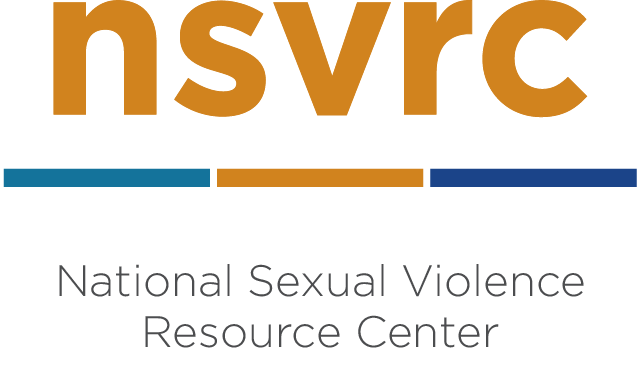People spend much of their time at work or engaging in work related activities. The resources in the section focus on facts and statistics on how work and economic security are impacted by sexual violence. This section also provides resources that highlight specific populations that may experience sexual violence in the workplace differently.
Overview and Statistics
Specific populations
Overview and Statistics
Sexual Violence & The Workplace: Overview (4 p.) by National Sexual Violence Resource Center (2013). This document provides an overview of sexual violence and the workplace provides statistics and a snapshot of the issues of sexual violence and the workplace and how sexual violence impacts a survivor’s employment and economic security.
Extent, Nature, and Consequences of Rape Victimization: Findings from the National Violence Against Women Survey (46 p.) by Patricia Tjaden and Nancy Thoennes (2006). This report details the findings of the National Violence Against Women Survey. The survey found that 19.4% of female victims and 9.7% of male victims raped as an adult said their victimization caused them to lose time from work.
Sexual Violence & the Workplace: Annotated Bibliography (8 p.) by National Sexual Violence Resource Center (2013). This annotated bibliography provides resources on the connections between sexual violence and employment. The resources highlighted in this guide can shed light on the needs of survivors and provide information on opportunities for prevention.
Sexual Violence & the Workplace: Research Brief (8 p.) by National Sexual Violence Resource Center (2013). The purpose of this research brief is to highlight the relationship between sexual violence and the workplace, and examine gaps in existing research. This research brief will allow advocates to connect the research on sexual violence and the workplace to their work with the clients they serve.
Specific populations
Restaurant workers
Tipped Over the Edge: Gender Inequality in the Restaurant Industry (40 p.) by the Restaurant Opportunities Centers United et. al (2012). This report documents the gender inequality in the restaurant work. It highlights discrimination and violence many workers experience while working. More than one in ten of surveyed workers reported they or a co-worker had experienced sexual harassment while working in a restaurant.
The Glass Floor: Sexual Harassment in the Restaurant Industry (40). By the Restaurant Opportunities Centers United and Forward Together (2014). This report documents the sexual harassment experiences of restaurant workers and reports how sexual harassment is fueled by sub-minimum wage and tipped employment. Finally, the report provides policy recommendations to create safer and more equitable workplaces.
Government workers
Workplace Violence Against Government Employees, 1994-2011 (19 p.) by Erika Harrell (2013). Using data from the National Crime Victimization Survey, this report provides an overview, trends, and characteristics of workplace violence experienced by government employee from 1994-2011.
Sexual Harassment in the Federal Workplace: Trends, Progress, Continuing Challenges (73 p.) by U.S. Merit Systems Protection Board (1995). This is the most recent study of sexual harassment in the federal workplace and found that 44% of women and 19% of men had experienced some form of unwanted sexual attention during the two years prior to the study. These rates were similar to the rates reported in earlier study.
Farmworkers
Rape in the Fields (webpage) by Frontline, the Center for Investigative Reporting, Investigative Reporting Program, & Documentales Univision. This special report includes investigative reporting articles and a 53 minute film on the sexual violence against farmworking women. Resources for agricultural workers are available. Some materials are available in Spanish.
Challenging Sexual Violence Against Immigrant Women in the Workplace: Part II (webinar) by ASISTA & NSVRC (2013). This 1.5 hour long webinar recording shares strategies to improve outreach efforts, with a focus on safety and prevention, as well as screening for immigration remedies for survivors of sexual violence in the workplace.
Cultivating Fear (101 p.) by Human Rights Watch (2012). This report discusses the sexual violence experiences of immigrant farmworkers in the United States. This report suggests that these experiences are common among farmworking women, reporting is limited, and that an advocates presence may increase reporting of these crimes.
Injustice On Our Plates: Immigrant Women in the U.S. Food Industry (68 p.) by Southern Poverty Law Center (2010). This report documents interviews of undocumented farmworkers. Female farmworkers are vulnerable to sexual violence. This report discusses the economic challenges, workplace exploitation and sexual violence women experience while working in the fields.
Sexual Violence Against Farmworkers: A Guidebook for Social Service Providers (68 p.) by California Rural Legal Assistance, Esperanza, Lideres Campesinas, and Victim Rights Law Center ( n.d.). This guide provides information to advocates on how farmworkers are impacted by sexual violence and how to best serve their unique needs.
Military
Research & Reports (webpage) by United States Department of Defense Sexual Assault Prevention and Response. This webpage provides reports on sexual assault and prevention of sexual assault in the U.S. Military.
General Information and Statistics
Information for Employers
Information for Advocates
